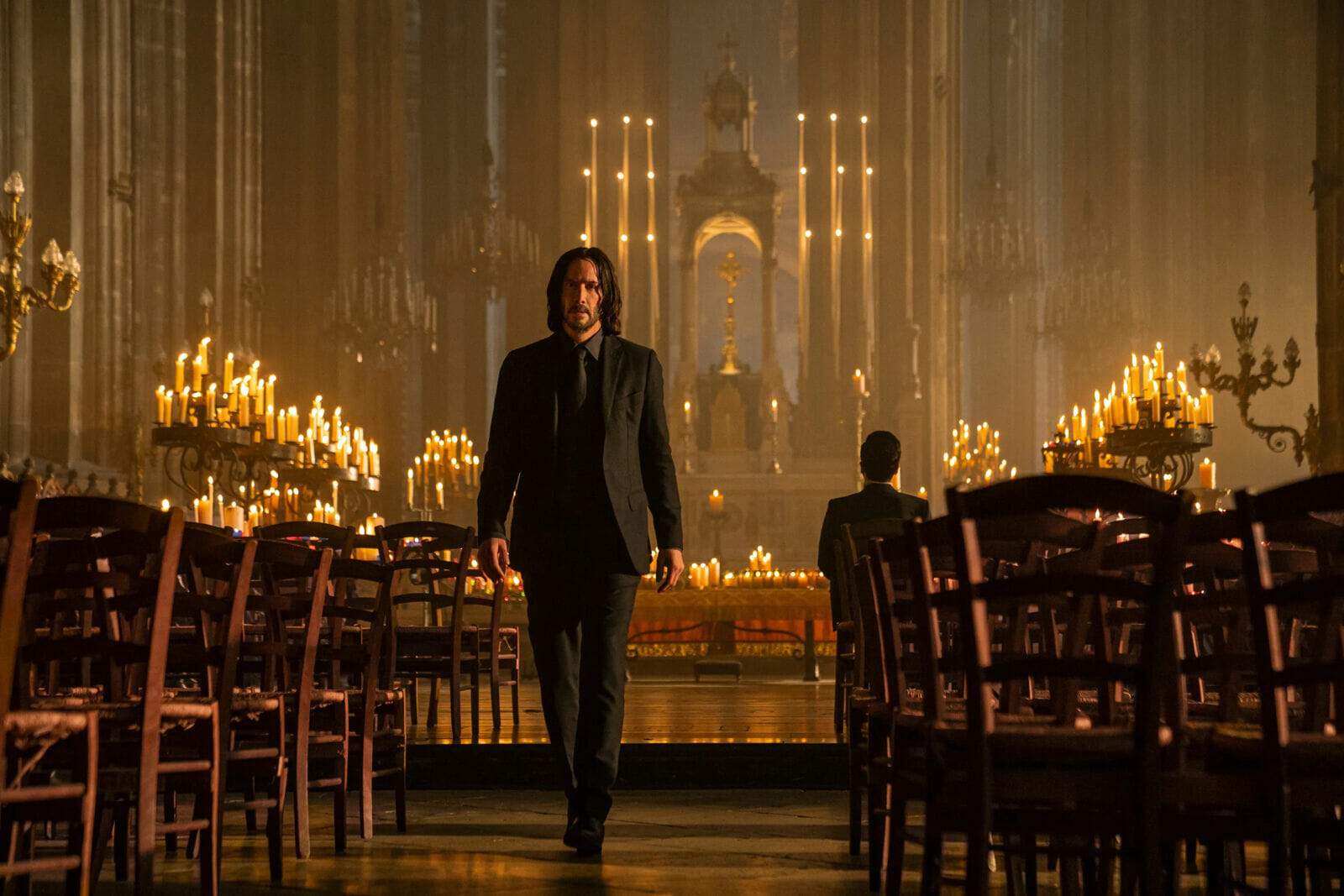It’s nice to see a real John Wick after the latest dispatch of imitators. In just the past year, we’ve seen vampire hunters, bullet train passengers, and Santa Claus don Wick’s distinct clothing, from long tracking shots capturing MMA gun ballets to piecemeal lore reveals unveiling tapestries of backstory. But for all their flattery, Wick’s acolytes lack a key element of their progenitor: an imposing sense of style. John Wick: Chapter 4, distinguishing itself immediately, opens with Keanu Reeves’ Matrix co-star reciting the inscription above the gates of hell in Inferno before cutting from a blown-out match to the rising desert sun like Lawrence of goddamn Arabia. Wick’s impersonators could never.
READ ALSO: Read all of Ryan Bordow’s movie reviews here
READ ALSO: Here’s how Arizona film incentives could attract filmmakers
Such conscious reference to its forebearers, whether mythic poem or action movie, is critical to what makes John Wick so special. Little of the series feels natural—not its stagily choreographed fights infused with thematically resonant mood lighting nor its three-note characters living up to their caricatures—but its artifice is knowing and bold. It’s like watching an action film through a stained-glass window the director wheeled in front of the screen, proudly warping its tone and colors into violence magisterial. In a vacuum, that might come off as bombast, but in hand with Wick’s reverence for its influences, the artifice plays as tribute: a glorious, outsize ode to the DNA of the action film. Chapter 4 rides that vibe to the end, earning its mythic self-importance with a punch and a wink.
The film finds John sticking to his guns that the only way out is through, turning against the crime lords of the High Table to avoid a sentence of death (giving or receiving). This time, High Table tyrant Vincent de Gramont (a well-cast Bill Skarsgård) has turned John’s old friend Caine (Hong Kong action legend Donnie Yen!) against him, threatening John Wick with one of the few men he wouldn’t send to eternity in an instant. Yen is a perfect foil for Reeves—they both grit through their lines with humorous severity—and he sets a new stunt benchmark for Keanu to live up to. Reeves has brought a lot to Wick by fighting his own fights, and in Chapter 4, handily the pinnacle of the series’ action, he and Yen strive to outdo each other with bladework, gunplay, and martial arts displays oozing with trained spectacle. In the language of their bodies, snapping between combat disciplines like machinery, director Chad Stahelski writes breathlessly creative killing.
It’s all very planned—the camera, like the choreography, knows so exactly how to impress that it upholds disbelief—but it’s hard to care when the plans are this good. Stahelski, leveraging the very specific gifts of a stuntperson-turned-director, blocks every finishing move for maximum guilty pleasure, all while the cinematography and production design drape the sets in Baroque architecture and hyper-saturated colors, nailing the dual purpose of externalizing mood and looking really cool. The film’s world feels handcrafted, like the High Table ethos of physical markers and rituals extended behind the camera—like you can reach out and touch the sweat on the cobblestone or the fire in the lights. All of reality has been aestheticized with the violence.
The film finds tonal balance in that grand, forgivable artifice. It’s so earnest and triumphant as a monument to its genre that no crowd-pleasing feels out of place—at times, its violence even borders on slapstick, and the winking physical comedy only ever feels welcome. A standout shootout framed by an overhead tracking shot, one of the film’s most impressive massacres, practically pauses for laughter when Wick starts setting guys on fire. Blink and you’ll miss a radio station with the call sign “WUXIA.” It’s all virtuosic fun.
That tonal balance mitigates the story’s arbitrariness—once again, the plot hinges on previously unheard-of rules giving John just enough wiggle room—but the three-hour runtime does no such favors. Screenwriters Shay Hatten and Michael Finch, Lionsgate’s replacements for Derek Kolstad after they forced him out of his own franchise, get lost in the lore of Chapter 4, stretching the journey between the set pieces thinner than ever. They seem to mistake the story’s set dressing—John’s Odyssean wanderings through clandestine networks—as an effective tool for dramatic escalation. It’s not. Avenging a puppy is a far more compelling hook than discovering which secret suborganization is next on the itinerary. The arbitrary globetrotting makes for some beautiful images—a trip to Osaka proves that John was destined to stand under a cherry blossom tree—but it slows the story into a waiting game.
At least your patience pays off. When Chapter 4 fires on all cylinders, it’s the best the series has ever been, etching its high points into the annals of action history. Between this and Chapter 2—the series’ finest entry overall—the collaboration between Stahelski and Reeves has set a new bar for the American action film. Now let’s enjoy this moment before the franchise melts into spinoffs and TV shows run by Lionsgate’s replacement writers.
★★★★ (4/5)




